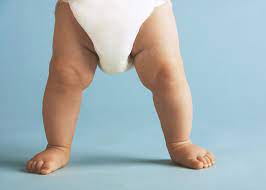Common Infant skin conditions NAPPY RASH
Today in this part of our baby series, I’ll go through one of the most common infant skin conditions to affect our precious offspring…nappy rash. Not a day goes by in the pharmacy without having a query on this prevalent skin condition.
Nappy rash is the most common skin disorder in infancy, affecting about 25% of young children at any time with a peak occurrence between the ages f 9 and 12 months of age. It can be distressing time for both the infant and the parent and can be very persistent, despite a parent’s diligence around nappy changing and hygiene practices.
What are the main causes of Nappy Rash?
Over the years diaper rash has been blamed on various causes, such as teething, diet, and ammonia in the urine. However, medical experts now believe it is caused by any of the following:
- Too much moisture
- Chafing or rubbing
- Prolonged contact of the skin with urine, faeces, or both
- Yeast infection
- Bacterial infection
- Allergic reaction to diaper material
An infant’s skin is 20% thinner than an adults skin and is also more permeable. When skin stays wet for too long, the layers that protect it start to break down. When wet skin is rubbed, it also damages more easily. Moisture from a soiled diaper can harm your baby’s skin and make it more prone to chafing. When this happens, a diaper rash may develop.
Further rubbing between the moist folds of the skin only makes the rash worse. This is why diaper rash often forms in the skin folds of the groin and upper thighs.
Nappy Rash occurs more commonly in
- Older babies
- When babies begin on solid food as a change in diet can result in more frequent and sometimes looser stools
- Teething, sometimes babies drool more when they teethe, excess saliva is produced and results in looser stools or diarrhoea, which can increase or worsen nappy rash
- If baby is on antibiotics or the mum of a breastfeeding baby is on anti-biotics this can sometimes result in diarrhoea, that can lead to irritant nappy rash. Exposure to antibiotics can also cause candidiasis or thrush, as it is more widely known. Antibiotics destroy good bacteria as well as the bad bacteria. The good bacteria help to keep yeast type fungus in check and while a baby is on antibiotics an overgrowth of yeast can occur. This results in thrush, which can look slightly different to normal nappy rash. It is usually redder, often slightly raised rash and can have bright red spots at the edges. It also can spread to the genital areas, whereas irritant nappy rash tends to remain towards the anus, folds of the skin and the skin near elastic edges of the nappy area
What can I do if my baby gets nappy rash?
If nappy rash develops despite your best efforts to prevent it, try the following:
- Change wet or soiled nappies promptly and very frequently
• Use lots and lots of luke-warm water to cleanse the nappy area with each nappy change. If the area is very soiled some mineral baby oil on cotton wool can be used to help remove faeces and make sure to gently and thoroughly wash the area with warm water.
#Canesten Cream
- Pat dry; do not rub. Allow the area to air dry fully or dry gently with a soft fluffy towel (washed previously in baby detergent). Often leaving the nappy off for prolonged periods can really help to resolve the sore area, even though this is not often a practical solution for the busy parent! Keeping the area dry is the key to resolving the issue.
- It is very important to be extremely gentle when cleaning the area while the infant has nappy rash, use lots of warm water to help clean more soiled areas, a squeezy bottle filled with water can be used to clean the area if the rash is very sore and painful.
-
- Rarely, a nappy rash can become infected with bacteria. If you child’s rash develops any open sores or pus filled areas, or if he/she develops a temperature, it is important to see your GP
- Avoid cleaning with wipes that contain fragrances or cleansers as these can further irritate the child’s skin. This also applies to fragranced bathing products.
- Maintain good hygiene by washing your hands before and after nappy change and clean baby’s nappy area from front to back.
- If your child has been exposed to antibiotics, consider that the rash may be caused by yeast infection which has resulted in thrush. A suitable anti-fungal cream such as Canesten Cream can be bought in the pharmacy to treat this.
- After drying the nappy area, apply a layer of a barrier cream, such as a petroleum jelly, zinc oxide or similar. Some nappy rash creams contain camomile which can help calm the area. The barrier cream protects the delicate skin from the wet environments of the nappy until the next change. Ensure area is fully clean and dry before applying any barrier type emollients as if the area is damp the barrier ointment seals in the wetness and can exacerbate the problem.
- Avoid using talc or baby powders as these are not recommended any longer in infants due to risk of inhalation
